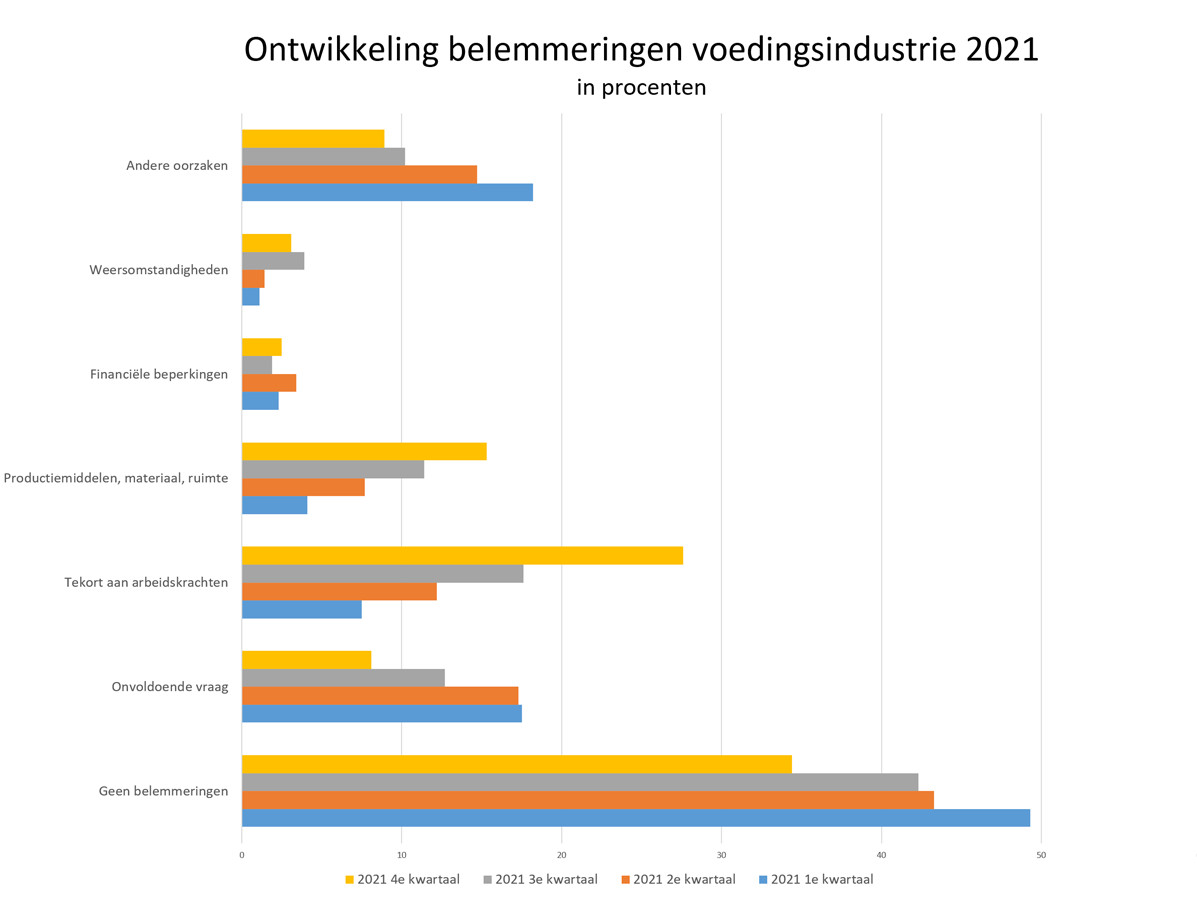
Almost two-thirds of entrepreneurs are currently unable to produce optimally and meet customer demand. At the start of the fourth quarter, the number of food manufacturers facing production bottlenecks reached its highest level this year. The main constraints are a shortage of labour (at over a quarter of the companies) and too little machinery, space, raw materials, etc. (at 15 percent). Shortages are affecting almost all branches of the food industry. Financial problems and insufficient demand are hindering only a small number of branches. This is apparent from an analysis by our editorial staff of economic data recently published by the CBS.
Nearly 80 percent of the slaughterhouses and meat processing industry are unable to produce optimally at the moment. A shortage of labour (29.5 percent) and insufficient demand (26.3 percent) are the main bottlenecks. The fruit and vegetable processing industry, the fish processing industry and the bread and pasta industry are also branches where a large majority of entrepreneurs (approximately three-quarters) indicate that they have production problems. The main culprits here are a shortage of personnel, machines, space and raw materials. The bread and pasta industry is the front runner in the food industry, with more than 37 percent of businesses experiencing staff shortages. The dairy industry experiences by far the least obstacles within the food industry. "Only one third of the entrepreneurs feel constrained in their production. Here too, labour shortages (9.9 percent) and production resources (also 9.9 percent) play a role.
At the start of the fourth quarter, financial constraints were hardly perceived as a bottleneck by entrepreneurs in the food industry. The fish processing industry is the only branch where more than 10 percent of entrepreneurs consider finance a bottleneck. The bread and pasta industry follows at a distance with nearly 6 percent of entrepreneurs who feel financially constrained.
Source: Vakblad Voedingsindustrie 2021